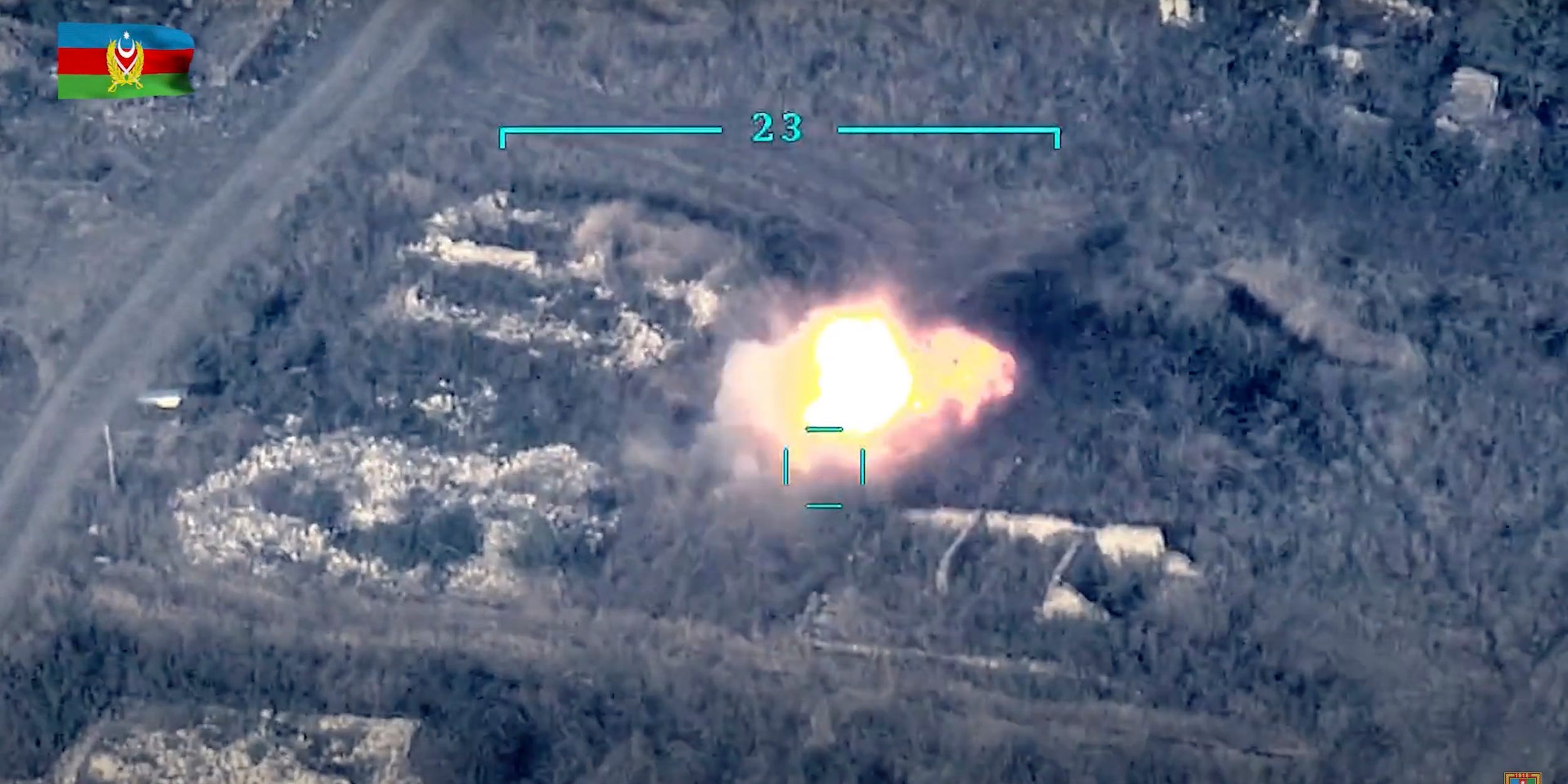
Azerbaijan Defense Ministry via AP
- Fighting between Armenia and Azerbaijan over the long-disputed territory of Nagorno-Karabakh erupted over the weekend.
- The clash is the most intense in decades, with reports of scores killed on both sides, and it could draw in the region’s major powers.
- Visit Business Insider’s homepage for more stories.
Fighting between Armenia and Azerbaijan entered its third day Tuesday around Nagorno-Karabakh, a territory the two countries have long disputed, but this clash is the most intense in decades and could draw in the region’s major powers.
The clashes have largely been along the line of contact, an unofficial border between Azerbaijan and Nagorno-Karabakh (known as Artsakh to Armenians), which lies within Azerbaijan but has been controlled by ethnic Armenian forces, backed by Armenia’s government, since 1994.
Within hours, Armenia and Azerbaijan published videos of tank battles and airstrikes as well as frontline combat and its aftermath.
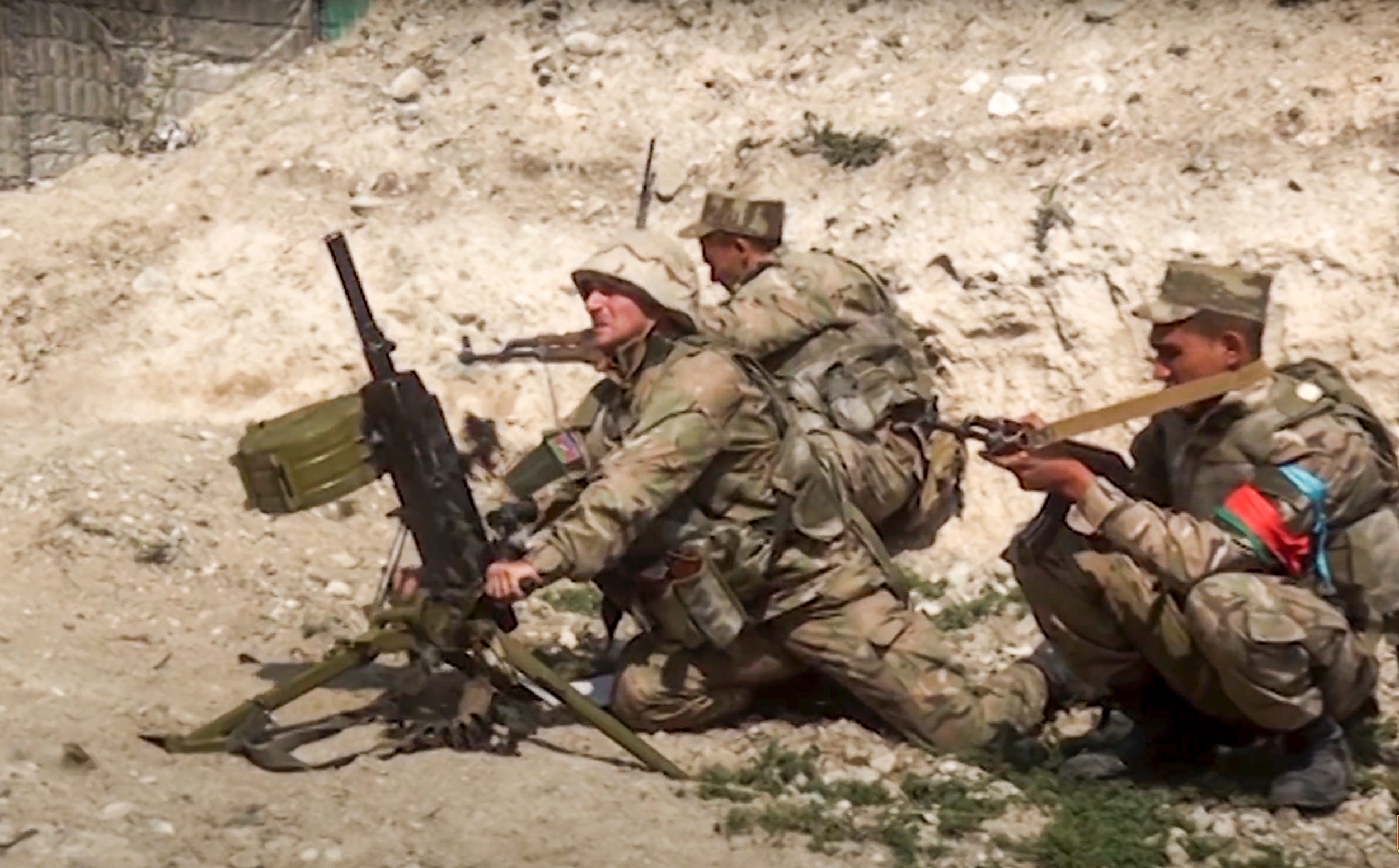
Azerbaijan Defense Ministry via AP
Both sides have made grand claims of enemy casualties. Azerbaijan claimed it killed 500 Armenian soldiers, while Armenian sources claimed to have killed over 200 Azeri troops. Armenia also said it destroyed 33 tanks and infantry fighting vehicles, four helicopters, and 27 drone aircraft.
Border skirmishes are common (a fight last July caused at least 16 deaths) and a 2016 flare up killed at least 200 on both sides, but international monitors have called the current fighting the worst since 1994.
Both sides have blamed the other for the recent escalation. While previous clashes were largely confined to direct assaults on strategic but uninhabited positions, Armenian media says Azerbaijan attacked along the entire frontline and captured a number of Armenian-controlled towns, which were recovered after counterattacks.
The fighting has brought a largely forgotten conflict back to the world's attention, a reminder that the dispute still has implications for the region and the world.
A fight decades in the making
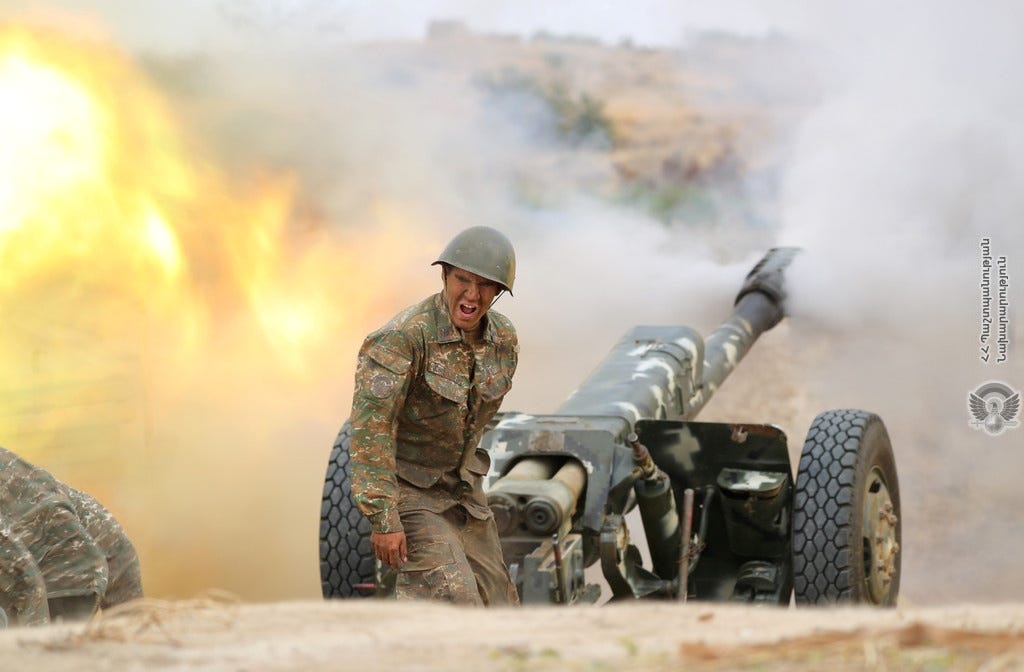
Armenia Defense Ministry/Handout via REUTERS
The South Caucasus has a complicated history. It has been ruled either completely or in part by the Ottoman, Russian, and Persian empires but is largely populated by Georgians, Christian Armenians, and Turkic Azeris. Ethnic tensions are longstanding and have often boiled over.
The entire area was brought under Russia's control in the 19th century. Azeris and Armenians lived in relative peace, though acts of brutality occurred on both sides.
When Armenia and Azerbaijan gained independence after Russia's collapse during World War I, territorial disputes led to a brief war with numerous atrocities. The war ended in 1921 when the Soviet Union annexed both countries.
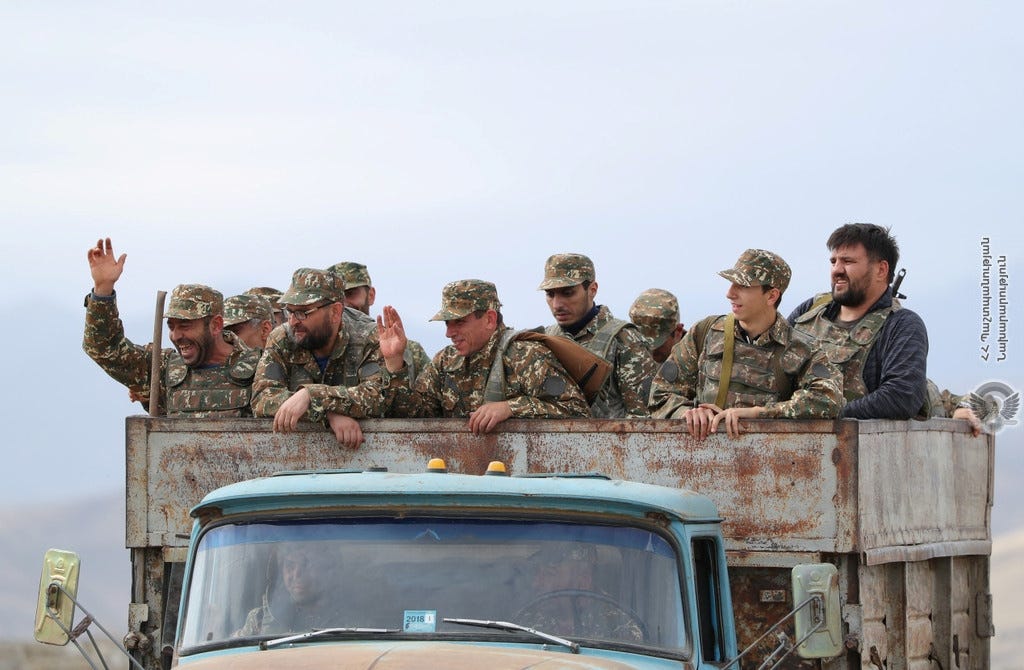
Armenia Defense Ministry/Handout via REUTERS
The Soviets gave the region of Karabakh to Azerbaijan, but they gave an area inside it, known as Nagorno-Karabakh, which had a majority Armenian population, autonomous status within Azerbaijan.
This kept the peace until 1988, when Armenians in Nagorno-Karabakh pushed to join Armenia. After the USSR dissolved in 1991, full-scale war broke out between the newly independent countries.
A ceasefire was declared in 1994. The war had killed some 30,000 people and displaced hundreds of thousands, but it ended with Armenian control over the unrecognized Nagorno-Karabakh Republic.
The territorial dispute remains unresolved despite numerous diplomatic efforts.
A changing landscape
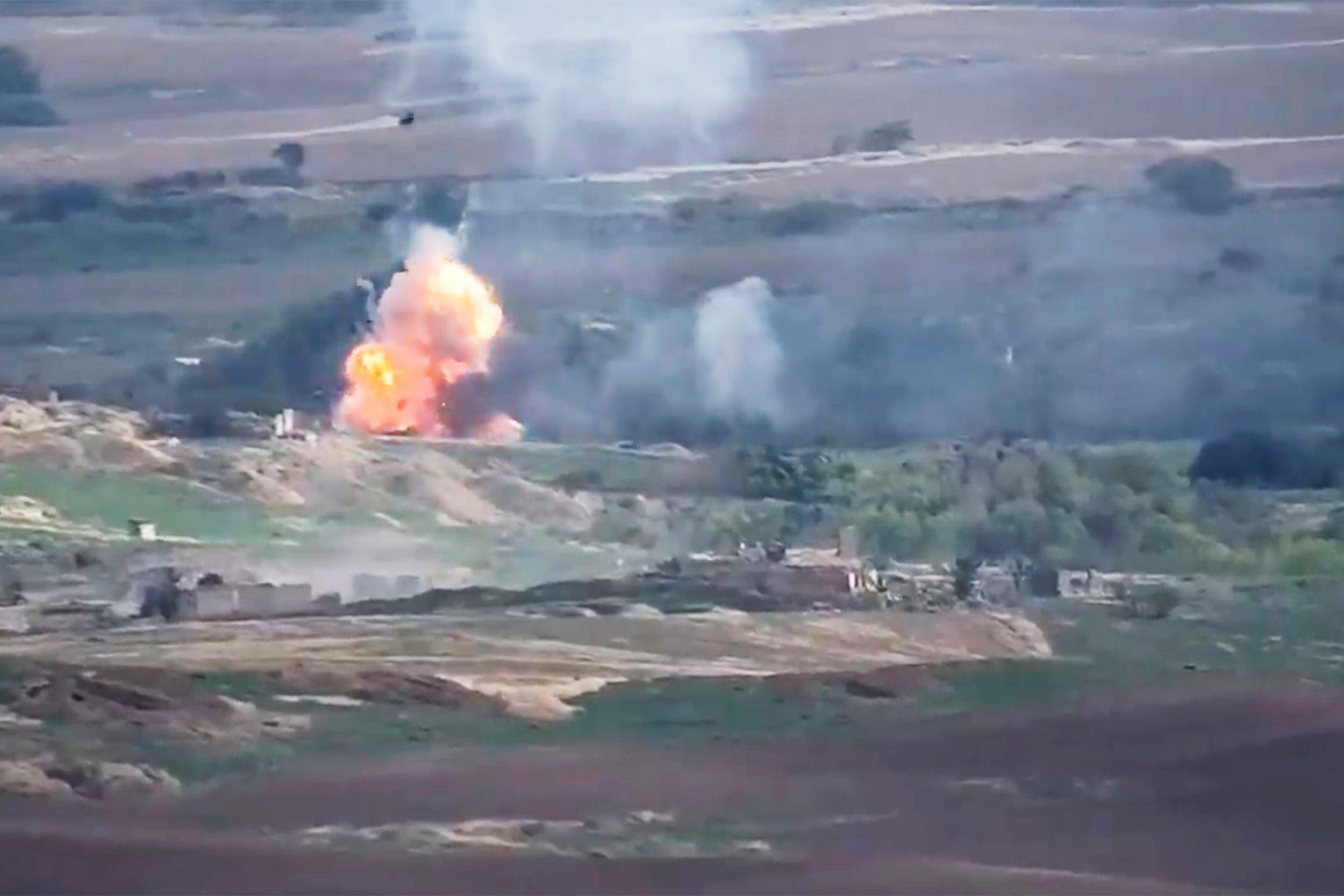
Armenian Defense Ministry via AP
While there have been no significant changes since the ceasefire, the current fighting suggests the landscape is shifting. This is due in large part to the region's biggest powers, Russia and Turkey.
Russia and Armenia have a mutual defense treaty and are members of the Collective Security Treaty Organization — Russia's counterpart to NATO. Russia also has a military base and several thousand troops in Armenia.
Turkey, a NATO member with the alliance's second largest army, fully supports Azerbaijan. Turkish President Recep Tayyip Erdogan has labeled Armenia as "the biggest threat to peace in the region."
Moscow and Ankara have called for de-escalation, but there are signs that they could be drawn into the conflict.
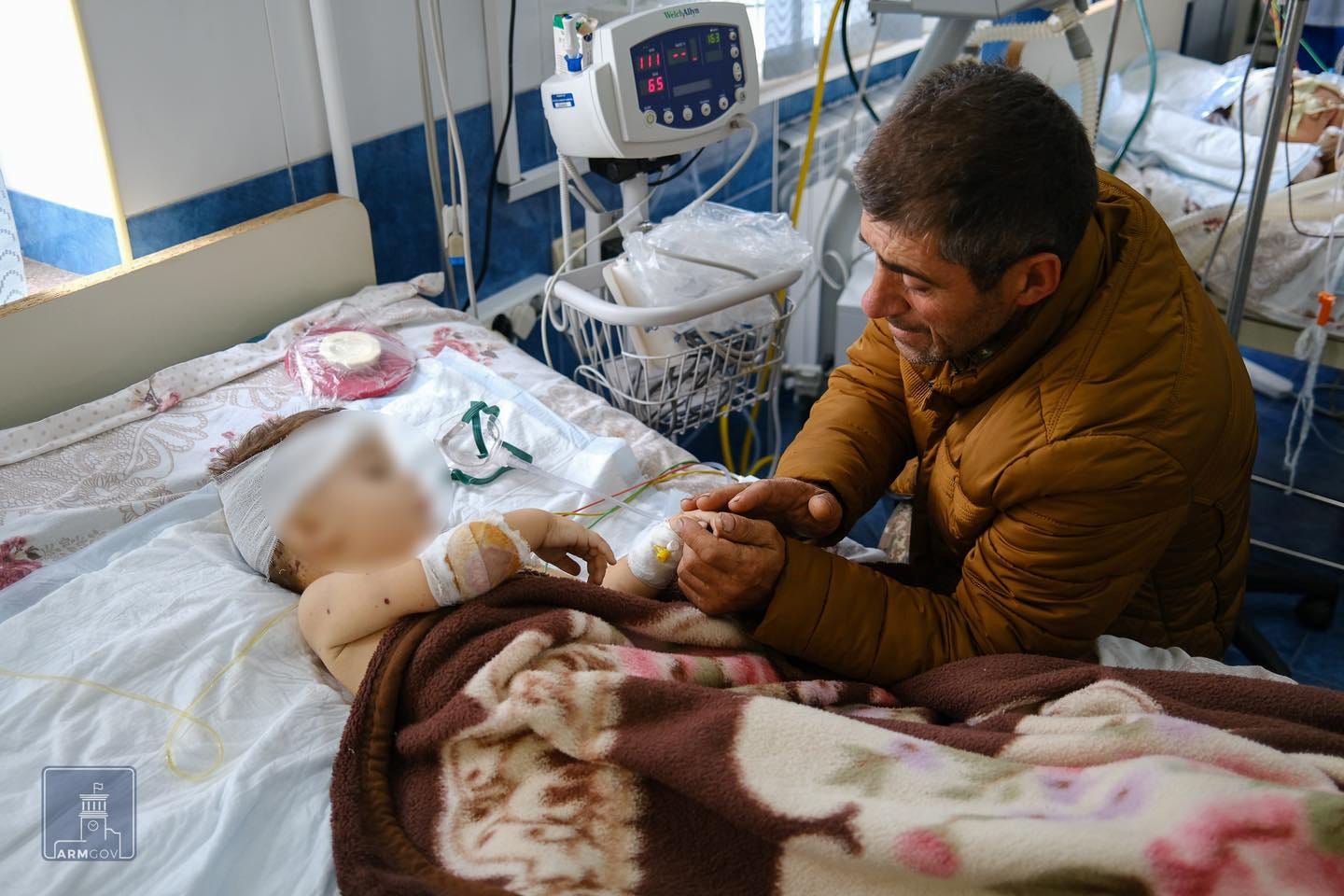
Armenian Defense Ministry/Handout
Armenia's foreign ministry claimed Turkish "experts" were fighting on the frontlines with Azeri soldiers, and there are reports that Turkey may have sent hundreds of Syrian rebel fighters to Azerbaijan, as it has done in Libya.
Armenia also claimed that a Turkish F-16 shot down an Armenian Su-25 in Armenian airspace on Tuesday, though Turkey has denied it.
Russia, the dominant military power in the region, conducted a major annual exercise in the South Caucuses last week with Armenia and five other countries. The drills included 80,000 troops and over 700 armored vehicles.
While Russia prefers diplomacy, its treaty with Armenia could draw it into the fighting if Azeri or Turkish forces cross into Armenia itself.
A potentially deadly future
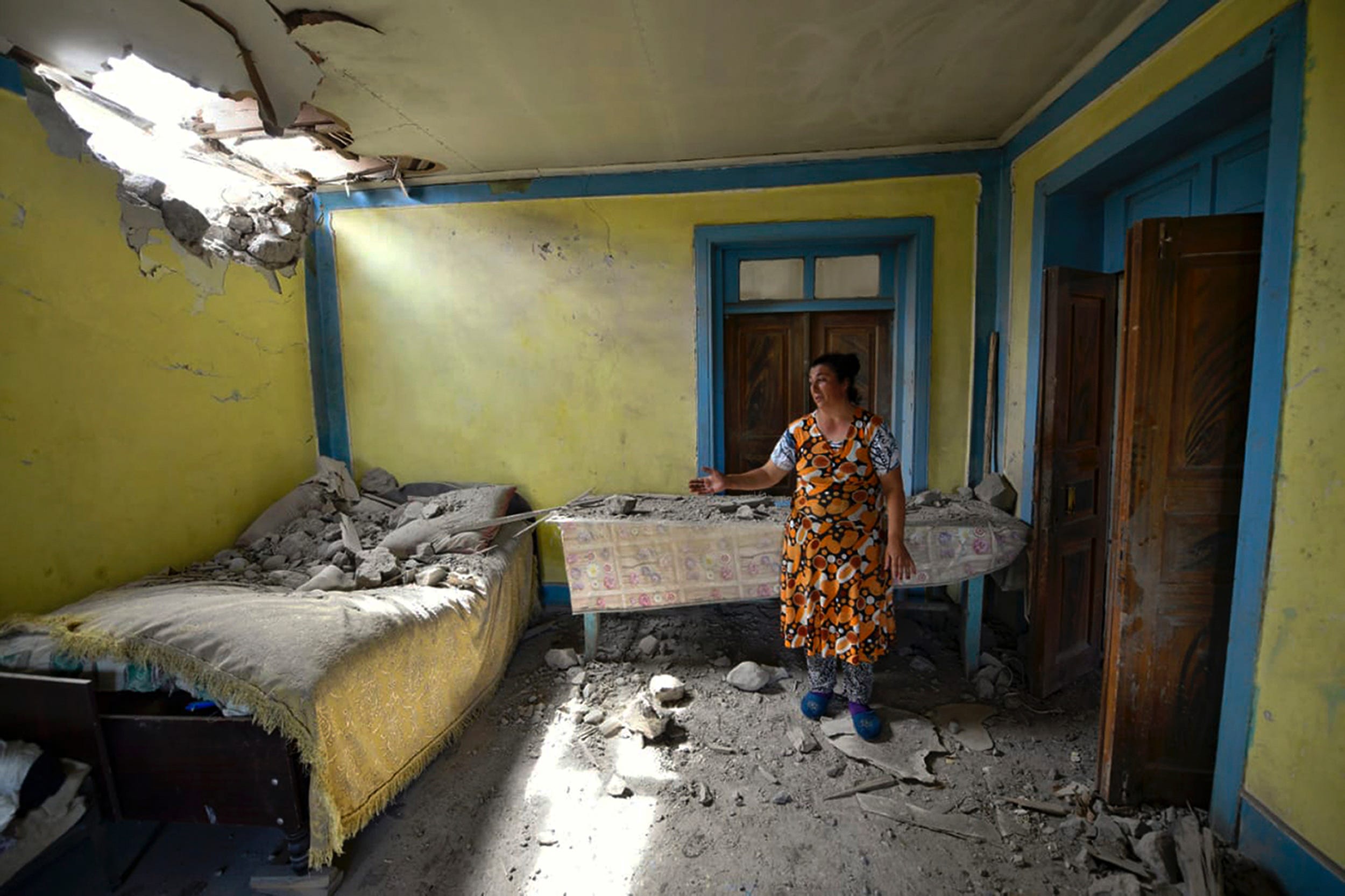
AP Photo/Ramil Zeynalov
With the current fighting ongoing, Azerbaijan and Armenia show no signs of backing down from their claims. While Armenia may hold out today, the balance of power is shifting.
Azerbaijan's economy has benefited greatly from its large oil reserves, and much of that money has financed military investment and modernization efforts.
Azerbaijan has more than double Armenia's active-duty personnel and is buying advanced weapons and vehicles. This includes drones, multiple-launch rocket systems, air defenses, and armored vehicles.
Many of those purchases come from Russia, despite it being Armenia's ally and security guarantor. While Armenia may control Karabakh, virtually every country recognizes Azeri sovereignty over the territory. Azerbaijani President Ilham Aliyev called reunification with Karabakh his country's "historical mission."
With no peace deal in sight and the prospect of Russian and Turkish involvement on the table, this largely unnoticed conflict may be the spark for a much larger fight.
